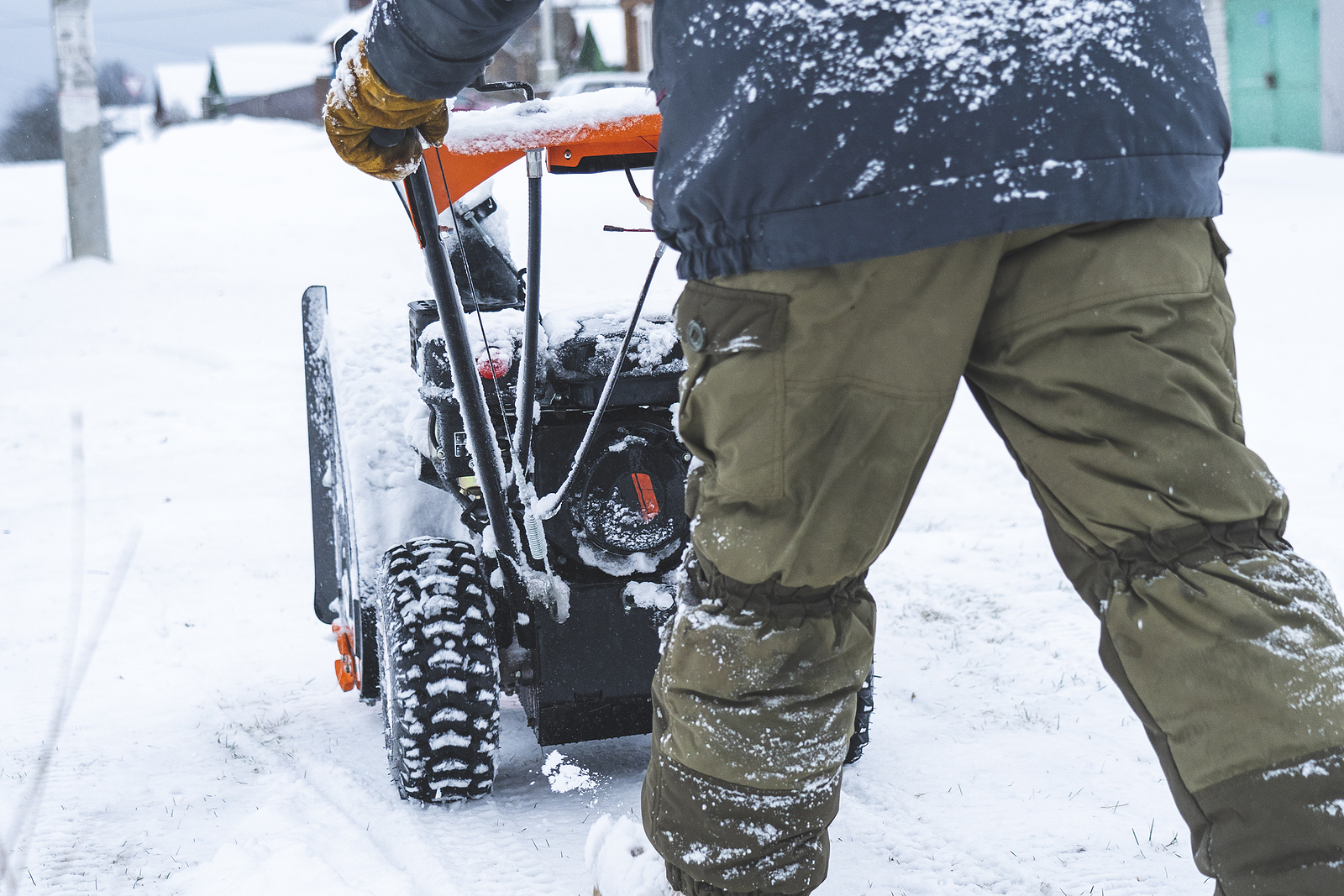Resident Responsibilities
Citizen cooperation is important to having safe and efficient snow and ice removal. To encourage this cooperation many communities have ordinances which designate snow routes or alternative parking regulations during snow events. One can only imagine how much easier it would be if the snow plow could drive straight down each lane of a street without having to dodge parked cars. Some communities prohibit the snow from sidewalks and driveways from being put into the street. As simple as this may seem, removing snow pushed into the street from the sidewalks and driveways creates additional stress on the equipment and may require repeated trips over the same street to maintain a passable driving lane, driving up the cost of snow removal for all citizens. Minimizing traffic during snow events is also very helpful, but, short of a curfew, that is certainly a voluntary action. Clearing the snow away from fire hydrants, roadside mailboxes and utility meters is another voluntary action that can reap great benefits. The mobile attitude and culture of citizens is very apparent every winter; they want to go about their business and have the streets and highways cleared thoroughly and immediately.
Training
Training should focus on being prepared, how to check equipment and other safety factors for snow plow personnel. In addition, many communities set up practice driving courses to simulate turning, driving through traffic and backing up in tight areas. Some communities even participate in a Snow Plow Roadeo where a course is established for maneuvering large pieces of equipment in a friendly competitive atmosphere.
The type of equipment needed for de-icing applications also varies from community to community. Some use salt brine while others use calcium chloride, a salt and sand mixture, or even sugar beet juice. Each has its benefits and costs, but training and maintenance must be provided to the crew in order for effectively and efficiently apply de-icing materials.
Staffing
During bad storm events many cities pool their employees in an “all hands on deck” method to allocate all available resources to combat the storm. One caution, make sure all employees have had some training and experience in these new duties.
Cities who do not have staff, or not enough staff, for really severe storms may turn to outside contractors to do snow removal. The city must be very careful that the work provided meets the definition of a contractor according to federal law. For example, a citizen offers to do the snow removal when the city wants him to plow, with the understanding that the city provides the truck, plow, gas and insurance; under federal law this individual would likely be considered an employee and not a contractor. If, on the other hand, a trucking firm is hired by the city, and they use their own equipment and have their own worker’s compensation and liability insurance, then under the federal definition this firm would likely qualify as a contractor. Using outside contractors may help a city control costs during the event without hiring employees to do the short-term work.
Managing Overtime
One of the major costs associated with snow removal is overtime. Many cities try to control the amount of overtime spent on snow removal through policies about when the plows will go out (minimum snow fall levels) or by prioritizing streets, commonly known as snow routes. Through policies, larger cities can stagger the times that the plows are on the streets. Some may go out early in the morning when traffic and parked cars do not hinder the plows, while others wait until the normal work day is scheduled. But how long an employee can plow before overtime kicks in is pretty clear in federal laws under the Department of Labor. For covered, nonexempt employees, the Fair Labor Standards Act (FLSA) requires overtime pay to be at least 1.5 times an employee’s regular rate of pay after 40 hours of work in a workweek. Extra pay for working weekends or nights is a matter of agreement between the city and the employees (or the employees’ representative). The hours of work are calculated based on the number of actual hours worked (this does not include vacation, sick leave or holiday hours). Some communities may have personnel policies or union contracts that are more generous; however these are the federal laws. Some employers may prefer to have overtime paid while others may prefer to have compensative time off (accumulated at a rate of 1.5 hours per hour of overtime). City policy may have limits on when this time can be used or a cap on the number of hours which can be accumulated. Monitoring these policies should be a regular part of payroll, however bad snow or ice events may put a strain on these limits.
Some cities use a policy of 12 hours off-duty for every 12 hours on-duty (which mirrors the Federal Motor Carrier Safety Administration Hours of Service Rules for commercial motor vehicles); others use eight hours off for every 16 hours on duty. The goal is to provide adequate rest and recuperation time so when the driver comes back they are fit for duty.
Safety
Buildings frequented by the public will likely receive priority for clearing sidewalks, parking, steps, etc. Don’t forget those mats just inside the door, commonly referred to as “walk-off mats”. A general rule is the first 15-20 feet inside the entrance is the most critical area for slip and fall prevention. Another good idea is to place signs to remind people of the slippery conditions during and just after weather presents a slipping hazard. Here’s a few do’s and don’ts:
- Wear footwear appropriate for the conditions inside and outside.
- Walk, don’t run, through work areas.
- When carrying a load, make sure you can see around it.
- Clean-up, correct, remove and/or report unsafe conditions.
Street and road workers know the perils of winter weather, but everyone can use a few timely reminders. While you rarely have to remind a seasoned equipment operator to dress for the weather, including proper footwear, it’s a good idea to cover the proper way to enter and exit the cab of a motor grader and snowplow-equipped vehicles. Drivers often spend their entire shift in the cab, and after sitting for long periods, care needs to be taken not to pull or strain themselves as they exit. Here are a few tips for heavy equipment operators:
- Use three points of contact when entering and exiting equipment. Maintain both hands and one foot, or both feet and one hand, in contact at all times.
- Enter and exit equipment facing it.
- Take the time to inspect your equipment during the shift, using it as an opportunity to get out of the cab and stretch.
- Use all the steps; never jump from equipment.






